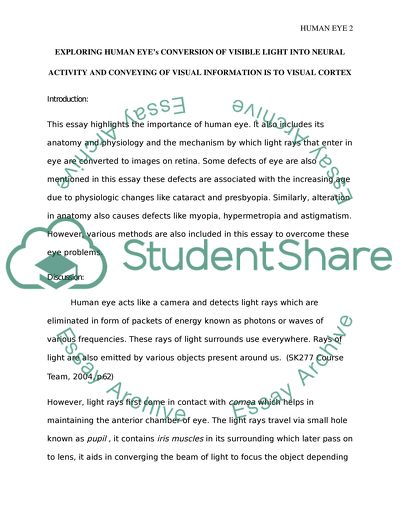Cite this document
(“Exploring Human Eyes Conversion of Visible Light Into Neural Activity Essay”, n.d.)
Retrieved from https://studentshare.org/biology/1499006-how-the-eye-is-suited-for-the-purpose-of-converting-visible-light-into-neural-activity
Retrieved from https://studentshare.org/biology/1499006-how-the-eye-is-suited-for-the-purpose-of-converting-visible-light-into-neural-activity
(Exploring Human Eyes Conversion of Visible Light Into Neural Activity Essay)
https://studentshare.org/biology/1499006-how-the-eye-is-suited-for-the-purpose-of-converting-visible-light-into-neural-activity.
https://studentshare.org/biology/1499006-how-the-eye-is-suited-for-the-purpose-of-converting-visible-light-into-neural-activity.
“Exploring Human Eyes Conversion of Visible Light Into Neural Activity Essay”, n.d. https://studentshare.org/biology/1499006-how-the-eye-is-suited-for-the-purpose-of-converting-visible-light-into-neural-activity.


